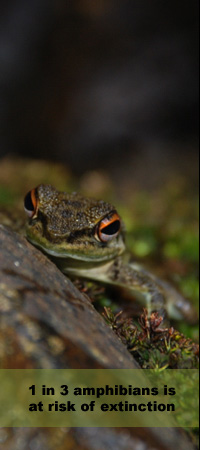|
The first major groups of amphibians emerged in the Devonian Period about 360 millions years ago from fishes where the fins had evolved into legs. At that time amphibians were much larger than what we know of amphibians in our contemporary world. The first true frog (Vieraella herbsti) originated from the early Jurassic (188–213 million years ago). It was a relatively small frog. The earliest fossil record of a modern frog originated 125 million years ago.
Living amphibians include three primary groups, frogs and toads (Anura), salamanders (Caudata), and caecilians - legless amphibians - (Gymnophiona), that are comprised of about 8,739 described species (in 2024) with maybe another 500 extant species that have not been described yet. About 90 percent of all amphibians are anurans (Table 1).
Table 1. Number of genera, species, and world distribution of frogs, toads, salamanders, and caecilians.

Amphibians are characterized as vertebrates with two occipital condyles at the base of the skull, unsupported fins, water permeable skin, two types of skin glands, cutaneous respiration, and two-stage life cycle.
Amphibians supplement body heat from external sources. Generally, amphibians are active at lower temperatures than reptiles. For example, some salamanders of North America can be moving at temperatures just above freezing. Most species of amphibians live in moist environments because their skins once dry cannot function as a respiratory surface. Therefore, most amphibians are nocturnal and are active during the wet season.
In general, amphibians around the world occur in forests where habitat is moist. Other terrestrial habitats less preferred by amphibians are savannas and deserts. About 4,000 amphibian species depend on freshwater habitat during some stage of their life cycle.
Reproduction
About 70 percent of all amphibians possess a two-phase cycle consisting of aquatic eggs and larvae and terrestrial juveniles and adults. Adults of these species typically migrate from terrestrial habitats (e.g., forest) to aquatic habitats (e.g., pond) where they court, mate, and deposit eggs. For example, the common toad (Bufo bufo) from Europe can have three distinct migrations to three different habitat locations (Figure 1).
Depending on species, adults may spend a few hours to weeks at the breeding site. The rest of their lives is spent foraging or being inactive in terrestrial or arboreal retreats.
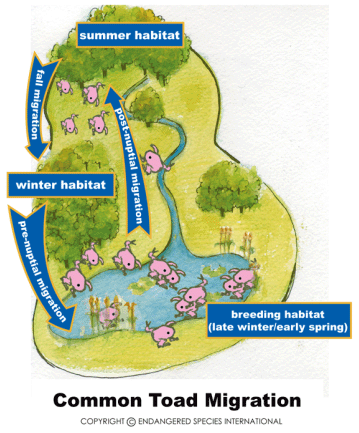
Some amphibian species are totally terrestrial and have eliminated the aquatic larval stage completely. Frog species from the tropics of the genus Eleutherodactylus lay their eggs in moist place (e.g., under the litter of the rainforest) and all embryonic development occurs in the eggs. At least 36 modes of reproduction are known in amphibians.
The number of eggs in a clutch varies considerably depending on species. For example, the tiny Mount Iberia frog (Eleutherodactylus iberia) from Cuba lay one single egg. In contrast, the cane toad (Bufo marinus) from Central and South America lay as many as 30,000 eggs in one clutch.
Amphibian eggs do not appear to use noxious chemicals or poisons to deter predation. Toad eggs can be toxic to predators and exhibit a degree of unpalatability to fishes and snakes. The gelatinous envelopes of eggs provide protection against physical damages, desiccation, predation, and pathogens.
The embryonic period that follows oviposition (process of laying eggs) varies among species but generally ranged from few days to a month.
Continue on page 2
|
|
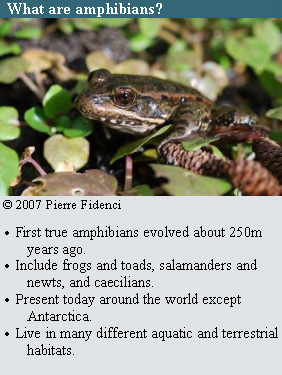

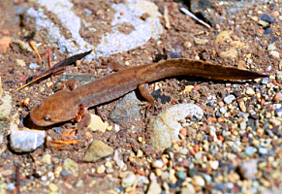
The California giant salamander (Dicamptodom ensatus) is known to produce sound.© 2002 Pierre Fidenci
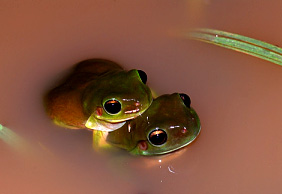
Mating or also called amphexus of the Australian green tree frog (Litoria caerulea). Copyright © Stewart Macdonald
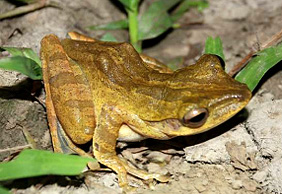
The brown-striped tree frog (Polypedates macrotis) inhabits primary forest and edge areas of Southeast Asia. © 2007 Pierre Fidenci
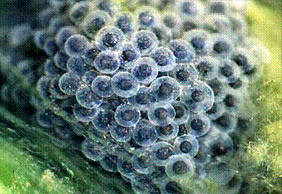
Egg mass of the foothill yellow-legged frog (Rana boylli) in California. © 2000 Pierre Fidenci
|

